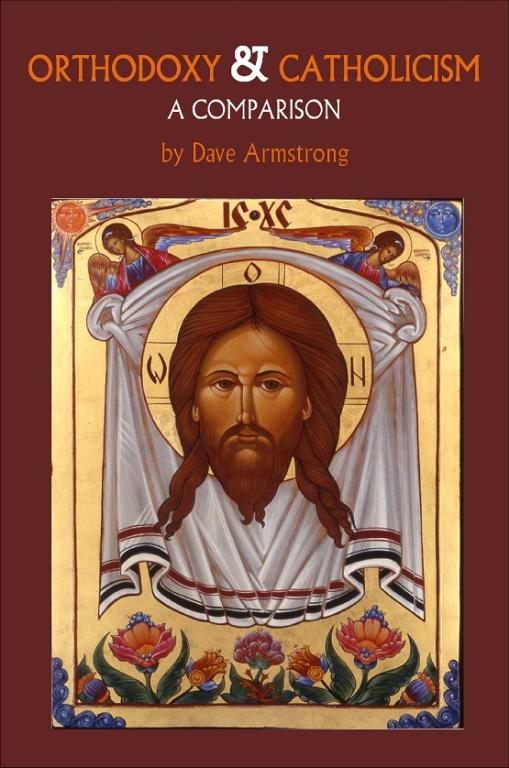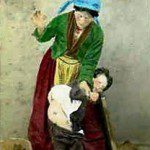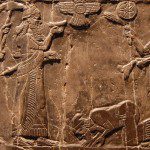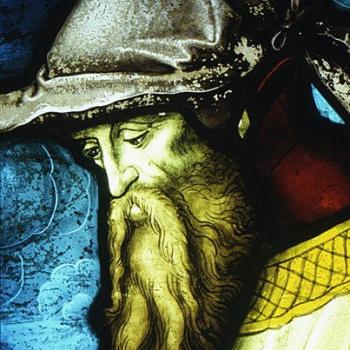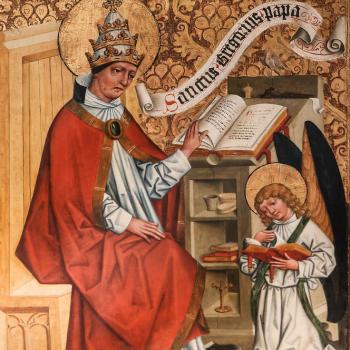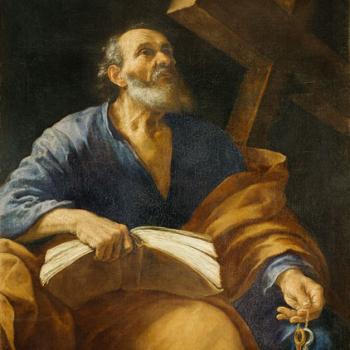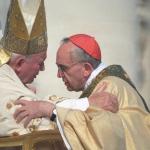. . . How Popes Routinely Consult Bishops, Priests, and Laity Prior to Momentous Decrees
[Lulu cover design by Fr. Deacon Daniel Dozier]
[my counter-reply to Fr. Deacon Daniel Dozier from Chapter Six of the heavily revised Third (2015) Edition of Orthodoxy and Catholicism: A Comparison]
* * * * *
I fully, wholeheartedly agree with my friend, Fr. Deacon Daniel’s words in his superb reply. Perhaps that may surprise some. It shouldn’t (for anyone familiar with my past work). I’ve always been as concerned with genuine, authentic ecumenism as I have been with apologetics.
Especially notable is his emphasis on “the manner of [the papacy’s] exercise” often historically being a problem. That’s most unfortunate, but the good news is that recent popes seem to “get” it. We particularly see this in the profound ecumenical efforts of Ven. Pope Paul VI, Pope St. John Paul II (I’m a huge fan of his ecumenical encyclicals), and Pope Benedict XVI. The way forward is clear and already manifest, and it’s exciting and heartening to observe.
The emphasis on collegiality in the Second Vatican Council was noted above. In my understanding, this council stressed the infallibility of ecumenical councils in a way more explicit and highly developed than had ever been seen before. This might be seen also as a bolstering of collegiality, insofar as the authority of such councils (gatherings of bishops) is raised to a higher level.
This vision of conciliarism is, of course, one in which bishops and the pope are united and in harmony, with the pope as the head. Historically, during the high Middle Ages, conciliarism got off-track in the sense of false notions of councils being higher in the authority than the pope. The truly Catholic vision of authority and collegiality, most highly developed in Vatican II, is seen in its Dogmatic Constitution on the Church (Lumen Gentium): 21 November 1964:
*
22. Just as in the Gospel, the Lord so disposing, St. Peter and the other apostles constitute one apostolic college, so in a similar way the Roman Pontiff, the successor of Peter, and the bishops, the successors of the apostles, are joined together. Indeed, the very ancient practice whereby bishops duly established in all parts of the world were in communion with one another and with the Bishop of Rome in a bond of unity, charity and peace, and also the councils assembled together, in which more profound issues were settled in common, the opinion of the many having been prudently considered, both of these factors are already an indication of the collegiate character and aspect of the episcopal order; and the ecumenical councils held in the course of centuries are also manifest proof of that same character. And it is intimated also in the practice, introduced in ancient times, of summoning several bishops to take part in the elevation of the newly elected to the ministry of the high priesthood. Hence, one is constituted a member of the episcopal body in virtue of sacramental consecration and hierarchical communion with the head and members of the body.
. . . The order of bishops, which succeeds to the college of apostles and gives this apostolic body continued existence, is also the subject of supreme and full power over the universal Church, provided we understand this body together with its head the Roman Pontiff and never without this head. This power can be exercised only with the consent of the Roman Pontiff. For our Lord placed Simon alone as the rock and the bearer of the keys of the Church, and made him shepherd of the whole flock; it is evident, however, that the power of binding and loosing, which was given to Peter, was granted also to the college of apostles, joined with their head. This college, insofar as it is composed of many, expresses the variety and universality of the People of God, but insofar as it is assembled under one head, it expresses the unity of the flock of Christ. In it, the bishops, faithfully recognizing the primacy and pre-eminence of their head, exercise their own authority for the good of their own faithful, and indeed of the whole Church, the Holy Spirit supporting its organic structure and harmony with moderation. The supreme power in the universal Church, which this college enjoys, is exercised in a solemn way in an ecumenical council. (ch. 3, section 22; footnote numbers excised; Latin translated by the Holy See; from the EWTN Internet posting)
*
Servant of God Fr. John A. Hardon, S. J. my mentor, wrote some interesting things about collegiality in his book, The Catholic Catechism (Garden City, New York: Doubleday & Co., 1975, 219-221):
*
*
[A] new dimension has entered the picture in the past century, or rather an always present dimension received new emphasis and raises some new, even startling, implications for the future. Collegiality must now be seen as an aspect of apostolicity. It is the Church’s apostolicity seen from the standpoint of her social or collective, hence collegial, character.
*
. . . the apostles were not only called individually . . . they were also a collegial community . . .
We see them acting as a body during the novena of waiting for the spirit after Christ’s Ascension, when, on Peter’s initiative, they chose Matthias to replace Judas. We see them doing the same at the council in Jerusalem to settle the thorny problem of whether Christian converts had to follow the Jewish laws. . . .
For more than sixteen centuries, these forms of collegiality-in-practice were commonplace in the Church, yet the doctrine itself was only partially realized until the mid twentieth century and formalized under John XXIII and Paul VI. Several reasons may account for this, but one contributing factor was the dawn of the communications age . . .
*
Finally, I would like to note the historical fact of input to the pope in the matters of the two dogmatic definitions of the Immaculate Conception of the Blessed Virgin Mary (1854) and her Bodily Assumption (or Dormition, as the East refers to it, in 1950). In no way were these merely “top-down” (some would say, arbitrary) decrees. The two popes (Blessed Pope Pius IX and Ven. Pope Pius XII) took into consideration the desires of not only bishops, but also priests and laypeople (sensus fidelium). Thus, in the widest sense of the term, these proclamations may be regarded as collegial in nature (though I’m sure our Eastern friends would note that the East was inadequately represented in the “polling”). Catholic theologian Alan Schreck observed:
*
In the hundred years before Pope Pius’ declaration, the popes had received petitions from 113 cardinals, 250 bishops, 32,000 priests and religious brothers, 50,000 religious women, and 8 million lay people, all requesting that the Assumption be recognized officially as a Catholic teaching. Apparently, the pope discerned that the Holy Spirit was speaking through the people of God on this matter. (Catholic and Christian, Ann Arbor, Michigan: Servant Books, 1984, 180)
Likewise in an article in the Catholic apologetics magazine This Rock (“Assumptions About Mary”, May/June 1992, 12-18; quote from p. 18), T. L. Frazier noted of the bishops consulted by Ven. Pope Pius XII:
*
*
[O]nly 22 replied negatively. Of the 22, only six doubted that the Assumption was a divinely revealed truth, the rest feeling that the time was not yet appropriate for such a definition.
*
Blessed Pope Pius IX, in his Apostolic Constitution Ineffabilis Deus, (8 December 1854) in which he defined ex cathedra the dogma of the Immaculate Conception, noted the sought-after (overwhelming) consensus of the bishops:
*
Although we knew the mind of the bishops from the petitions which we had received from them, namely, that the Immaculate Conception of the Blessed Virgin be finally defined, nevertheless, on February 2, 1849, we sent an Encyclical Letter from Gaeta to all our venerable brethren, the bishops of the Catholic world, that they should offer prayers to God and then tell us in writing what the piety and devotion of their faithful was in regard to the Immaculate Conception of the Mother of God. We likewise inquired what the bishops themselves thought about defining this doctrine and what their wishes were in regard to making known with all possible solemnity our supreme judgment.
We were certainly filled with the greatest consolation when the replies of our venerable brethren came to us. For, replying to us with a most enthusiastic joy, exultation and zeal, they not only again confirmed their own singular piety toward the Immaculate Conception of the most Blessed Virgin, and that of the secular and religious clergy and of the faithful, but with one voice they even entreated us to define our supreme judgment and authority the Immaculate Conception of the Virgin. In the meantime we were indeed filled with no less joy when, after a diligent examination, our venerable brethren, the cardinals of the special congregation and the theologians chosen by us as counselors (whom we mentioned above), asked with the same enthusiasm and fervor for the definition of the Immaculate Conception of the Mother of God.
Consequently, following the examples of our predecessors, and desiring to proceed in the traditional manner, we announced and held a consistory, in which we addressed our brethren, the cardinals of the Holy Roman Church. It was the greatest spiritual joy for us when we heard them ask us to promulgate the dogmatic definition of the Immaculate Conception of the Virgin Mother of God.
Therefore, having full trust in the Lord that the opportune time had come for defining the Immaculate Conception of the Blessed Virgin Mary, Mother of God, which Holy Scripture, venerable Tradition, the constant mind of the Church, the desire of Catholic bishops and the faithful, and the memorable Acts and Constitutions of our predecessors, wonderfully illustrate and proclaim, and having most diligently considered all things, as we poured forth to God ceaseless and fervent prayers, we concluded that we should no longer delay in decreeing and defining by our supreme authority the Immaculate Conception of the Blessed Virgin. (from the posting on EWTN; footnote numbers excised).
After consulting theologians Bl. Pope Pius IX had consulted 603 bishops and 546 (91%) had responded affirmatively. Four or five thought it couldn’t be defined, 24 were “inopportunists” (i.e., believed that the time was not right, independently of the truth of the doctrine), and ten wanted a more indirect definition.
It stands to reason then, in light of this existing strong collegiality, even in cases of the “highest” exercise of papal prerogatives (going back at least to the 1840s), and in light of the expressed desire for reunion, that in a reunited Church, Eastern bishops or patriarchs would be able to fully participate in this collegiality, under the headship of the Bishop of Rome, the pope. Being ecclesiologically or formally separate from Rome does not further that desired end on both sides. Reunion would then, I submit, greatly foster collegiality and a profound harmony of East and West in a way that has not been seen since the patristic age.
I bring up, in conclusion (but not in reply to Fr. Deacon Daniel), Eastern objections to Blessed Pope Pius IX: who might be the third-biggest “whipping-boy” of the Orthodox after St. Thomas Aquinas and St. Augustine: largely (so a cynic might opine) because he was in office when the decree of papal infallibility was declared, so that he has become a sort of “symbol” of the thing that is so opposed.
Fr. Deacon Daniel has already cleared him of the ludicrous legend of his supposedly putting his foot on Patriarch Gregory’s head. How did that myth and fairy-tale begin, one wonders? Orthodox might say (if they grant that it is a myth) that it was because of his “imperious” demeanor or what-not. But Catholics could just as well say that the legend arose from the rancid soil of centuries-long Eastern prejudices against Latins, Rome, and her popes. The bottom-line is that it isn’t true, and this is what is so endlessly repeated and believed. I saw it several times in looking up some potential sources for use in this reply.
One tires of these myths that contain an element of personal attack against some notable Catholic figure. St. Thomas Aquinas is supposedly a Mr. Spock-like hyper-rationalistic machine, when in fact he was a deeply spiritual and even mystical person as well as philosopher and theologian, who combined the rational and non-rational aspects of Christianity in an extraordinary way.
His Confessions reveal St. Augustine’s deep personal piety. So what do we know of the person of Blessed Pope Pius IX? What made him tick? Was it a lust for raw power and a domineering, arrogant spirit? Even Baptist historian Kenneth Scott Latourette wrote the following about him:
*
*
[H]is convictions in the main were in accord with what was eventually decided . . . he favored the ultramontane elements. That in doing so he was gratifying a personal desire for power is by no means so certain. He was a man of deep and genuine piety who had a quiet confidence in God, who scrupulously observed his daily meditations, who delighted in saying his breviary on his knees, and who spent much time in prayer before the Blessed Sacrament. As one sympathetic observer said, he was not a saint: he had his weaknesses, among them a quick temper. But that he sought to fulfil conscientiously what he conceived to be the duties of his high office appears to be undebatable.
(Christianity in a Revolutionary Age, Vol. 1 of 5: The Nineteenth Century in Europe: Background and the Roman Catholic Phase, Grand Rapids, Michigan: Zondervan Publishing House, 1958, 283)
*
It occurred to me while writing this reply, that there is a huge irony indeed running right through the Orthodox (and sometimes Eastern Catholic) objection to papal infallibility (or – a different thing – how it is exercised for better or worse). That irony is the following: the dogmatic proclamation of the infallibility of the pope was itself a conciliar decree; not a papal decree.
Blessed Pope Pius IX could have made the decree himself, just as he had proclaimed the dogma of the Immaculate Conception 16 years earlier. And even if he had done so, it would have been in deep consultation with bishops and priests, as was the case with the dogmatic, ex cathedra decree that he did make (as shown in my previous reply). But he didn’t do so. It was the council that did it. Now, if he was so power-hungry and arrogant, why is it that he didn’t merely proclaim the thing and grant himself all this power that he supposedly so desired (in a selfish, self-centered sort of way)?
Fr. Deacon Daniel stressed “conciliarity” over and over in his reply, and it is clearly the primary modus operandi of the East. Very well, then: papal infallibility was a conciliar decree. So where is the beef about that? Many people don’t like it, or even if they accept it as a dogma they do so plugging their nose or with a grimace. They don’t resonate with it; it’s not intuitive to them. It’s not accepted wholeheartedly or enthusiastically.
I understand some of that firsthand. I know how it rankles many people and irks them to no end. Papal infallibility was my single biggest gripe against the Catholic Church before I was received into it: by far: infinitely more than Marian doctrines, which I didn’t find difficult to believe at all, when properly explained to me. I fought it vigorously for many months. I thought it was the most self-evidently ridiculous thing in the world. And in defending it over the past 24 years as an apologist, I have heard (believe me) every imaginable objection to it.
But if we want to be serious about being conciliar (understood in the Catholic sense of the pope having “veto power”), we have to submit to what these councils proclaim. We can reject them because the decrees were not to our own personal liking. But then that is the spirit of Martin Luther and pick-and-choose, “cafeteria Catholic” dissent: going our own way; disbelieving that the Holy Spirit works corporately through his bishops and the pope, solemnly assembled.
The council decided that the pope was infallible, making this a dogma (at the highest level) of the Catholic Church. That’s conciliar; that’s the expressed will of the bishops in solemn, magisterial assembly. Think for a moment of the contrary (let’s do a thought-experiment here).
We can be assured that if it had gone the other way: the heretical (from the Catholic perspective) sort of conciliarism, whereby the Ecumenical Council is the highest, most supreme authority, above the pope (which in fact almost happened in the Middle Ages), that the Orthodox would then be trumpeting this and shouting it from the rooftops as the expressed will of the people, the sensus fidelium. That wouldn’t have been questioned for a second.
We know this also because we know the reaction the Orthodox (at least more ecumenical ones) have had to Vatican II: which stressed collegiality in an effort to further develop papal infallibility “in context” and Church authority in general. Fr. Deacon Daniel has repeatedly emphasized his admiration for the Second Vatican Council, which is fine with me, because I love and admire it as much as he does, and my hero (Cardinal Newman) is considered the “father” of it and in large part, the inspiration for it.
But because the council proclaimed that the pope was infallible (under certain specific conditions, as laid out), all of a sudden it is hyper-controversial and Pope Pius IX becomes the scapegoat and “bad guy.”
Bottom line: if we claim to follow the authority of councils and to be conciliar, then we have to accept in faith that God was working in those councils, to produce the right and true results. If we, on the other hand, want to selectively reject conciliar decisions (agreed-to by popes), then we have forsaken the Catholic rule of faith (and the Orthodox as well, in a somewhat different sense) and have adopted Protestant private judgment. The choices in this respect really are very few.
Blessed John Henry Cardinal Newman wrote some extraordinary things about papal infallibility, in relation to conciliarism. This is in turn fascinating, because the myth is that he was opposedto papal infallibility. He was notat all (he had held the doctrine himself for over 25 years, as he expressly stated); Newman was an inopportunistas to its timing and fully accepted and defended it when it was decreed. He wrote, after the definition was made by the council:
*
When you became a Catholic, you ought to have understood that the voice of the Church is the voice of God. The Church defines nothing that was not given to the Apostles in the beginning, but that sacred deposit cannot be fully brought forward and dispensed except in the course of ages. It is not any argument against the Pope’s Infallibility, that it was not defined as a truth till the 19thcentury. Don’t set yourself against the doctrine. Very little was passed, much less than its advocates wished – they are disappointed. Nothing is defined as to what acts are ex cathedra, nor to what things infallibility extends. Some people think the decree lessens the Pope’s actualpower. (Letters and Diaries, vol. xxv, 216; Letter to Mrs. Margaret A. Wilson, 20 October 1870)
*
The Church is the Mother of high and low, of the rulers as well as of the ruled. Securus judicat orbis terrarum. If she declares by her various voices that the Pope is infallible in certain matters, in those matters infallible he is. What Bishops and people say all over the earth, that is the truth, whatever complaint we may have against certain ecclesiastical proceedings. Let us not oppose ourselves to the universal voice. (Letter to Père Hyacinthe, 24 November 1870)
*
For myself, I see the doctrine implied in the conduct of the Roman See, nay of the Catholic Church, from the first, . . . The dogma seems to me as mildly framed as it could be—or nearly so. That the Pope was infallible in General Council, or when speaking with the Church, all admitted, even Gallicans. (Letter to Sir William Henry Cope, 10 December 1871)
*
I would say that you are quite right in saying that ‘the Church cannot delegate her magisterium to another’, and therefore cannot make the Pope infallible. The Council has done nothing of the kind – no Council does more than declarethe Apostolic truth. The early Councils declared that it was true that Almighty God was a Trinity in Unity – they did not makethe Trinity in Unity – and the Vatican Council does not makethe Pope infallible but declares that, when he teaches the revealed doctrine, God from the beginning has made him infallible. . . . It has been his pleasure to protect his own revelation, by committing the true teaching of it to the Church and to the Pope. They are infallible when they teach, because God made them so – they are not infallible except when they teach because God has not given them that gift at other times. (Letters and Diaries, vol. xxxii, 348; Letter to Henry Stacke, 9 February 1875)
*
. . . the great object of a Council being in some way or other to declare the judgment of the Church. . . . There are those who have no belief in the authority of Councils at all, and feel no call upon them to discriminate between one Council and another; but Anglicans, who are so fierce against the Vatican, and so respectful towards the Ephesine, should consider what good reason they have for swallowing the third Council, while they strain out the nineteenth. (Letter to the Duke of Norfolk, ch. 8, 1875)
*
There were circumstances in the mode of conducting the Vatican Council which I could not like, but its definition of the Pope’s Infallibility was nothing short of the upshot of numberless historical facts looking that way, and of the multitudinous mind of theologians acting upon them. (Letters and Diaries, vol. xxix, 118; Letter to William Froude, 29 April 1879)
*
Of course the Vatican Council has distinctly adopted as de fide what from the beginning was taught in the Church, though not defined. (Letters and Diaries, vol.xxx, 101; Letter to Henry Bittleston [2], 14 June 1882)
*
Cardinal Newman was also quite personally fond of Blessed Pope Pius IX, as was obvious, as I read many of his letters, in preparing my two quotations books of his utterances.
*
In conclusion, I would stress once again the conciliar nature of the dogma of papal infallibility, and the fact that it came about by majority vote, according to how councils have worked from the beginning. Church historian Latourette gives us some numbers to ponder:
*
On the preliminary vote of the question of approval of the declaration of infallibility, 451, or three-fourths, were in favour; 88, between a sixth and a seventh, were flatly opposed; and 62, slightly more than a tenth, approved with reservations. Ninety-one bishops abstained from voting. (Ibid., 282)
*
By my math, that is 692 bishops. 65% were totally in favour. If we add “approval with reservations,” the total “yay” vote is 513 out of 692, or 74%. Those “flatly opposed” were only 13% of the whole. This is the “voice of the bishops” and the “Mind of the Church”. If, theoretically, say, 400 Orthodox bishops had also been present, in a truly universal council, and all voted “no”; the ayes still would have had it, 513 to 488. So what would the response have been: to reject the council out of hand until they got the result they wanted? That’s not how Christian, apostolic authority works. But it is how dissidence and schism have always worked.
Lastly, how was the proclamation received? Was it regarded as an autocratic, “top-down” decision or was it perceived to be the will of the people? Latourette (no Catholic partisan) again provides an excellent overview:
*
It must be said, moreover, that the decisions of the Vatican Council, especially those which stressed the administrative authority and the infallibility of the Pope, represented the convictions of the large majority of those Roman Catholics who were sincerely committed to the faith. Like the majority of the council, they believed that here was nothing new, but only what had always been implicit in the deposit of the faith entrusted to the Church.
*
. . . Few serious protests came from any Latin country. They were not even widespread in France, where liberal Catholicism had been strong. (Ibid., 283-284)
*
He goes on to inform his readers of where opposition didcome from: England, the United States, Germany, Switzerland, and Austria. What else is new? Some things never change, do they? These are the very same countries where dissident, liberal modernist Catholics (real or in name only) thrive to this day: 144 years later. It’s also notable that, with the exception of Austria, they are all Protestant-majority countries or of a mixed nature. Germany today has almost equal numbers of Lutherans and Catholics, while Switzerland has slightly more Catholics.
Thus it is no coincidence at all that the ideas of Protestantism (some of them false) filter-down into the thoughts of Catholics, when the two groups mix. That was true in 1870 and remains very much true today.


